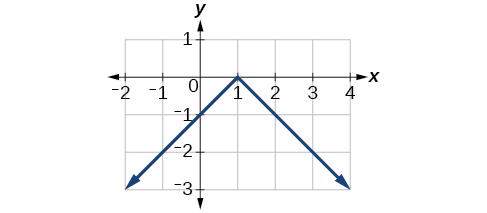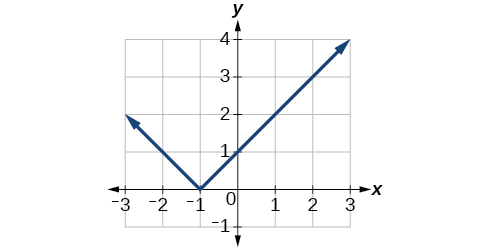17 Transformations of Functions
Topics Covered
Review Graphs of Toolkit/Parent Functions
Let’s review the basics of graphs of functions and the toolkit (parent) functions.
Graph of a Function
The graph of a function is the graph of all its ordered pairs, (x, y) or using function notation, (x, f(x)) where y = f(x).
| Notation | Description |
| f | name of function |
| x | x-coordinate of the ordered pair |
| f(x) | y-coordinate of the ordered pair |
| Function Name | Graph properties |
| Linear Function | 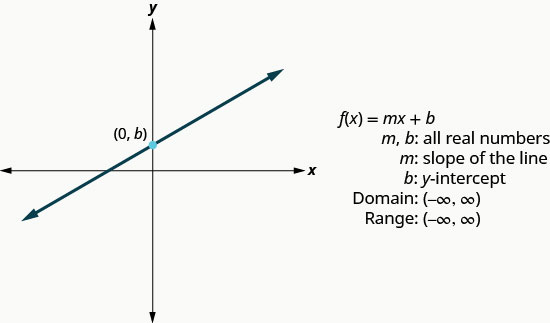 |
| Constant Function | 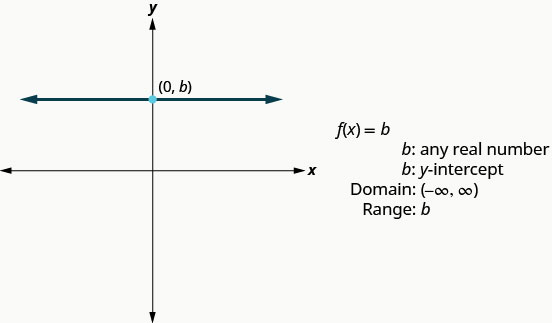 |
| Identity Function | 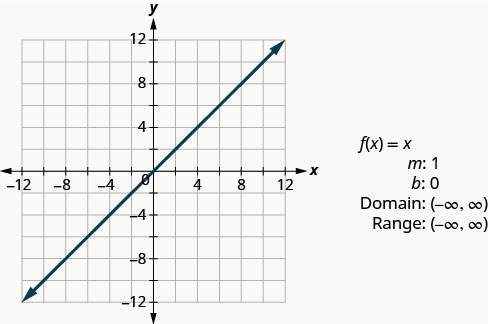 |
| Square Function | 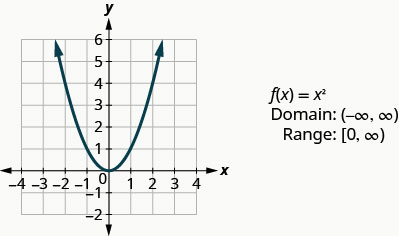 |
| Cube Function | 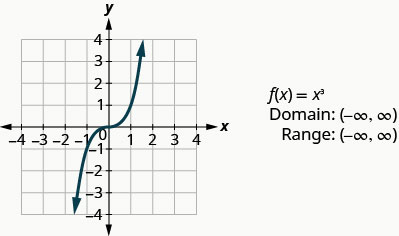 |
| Square Root Function | 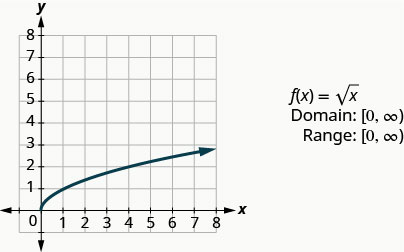 |
| Absolute Value Function | 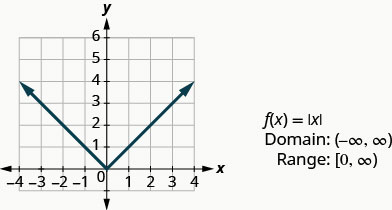 |
Vertical and Horizontal Transformations
One simple kind of transformation involves shifting the entire graph of a function up, down, right, or left. The simplest shift is a vertical shift, moving the graph up or down, because this transformation involves adding a positive or negative constant to the function. In other words, we add the same constant to the output value of the function regardless of the input. For a function g(x) = f(x) + k, the function f(x) is shifted vertically k units. See below for an example.
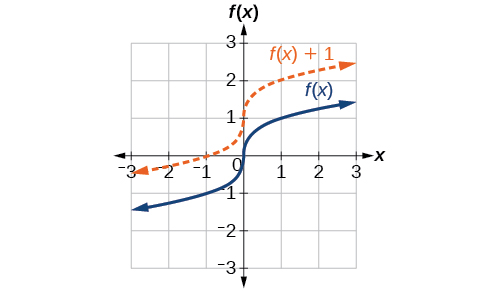
![Rendered by QuickLaTeX.com \displaystyle f(x) = \sqrt[3]{x}](https://utsa.pressbooks.pub/app/uploads/quicklatex/quicklatex.com-48e1cc12468b030b7f2ad7b453986292_l3.png)
To help you visualize the concept of a vertical shift, consider that y = f(x). Therefore, f(x) + k is equivalent to y + k. Every unit of y is replaced by y + k, so the y-value increases or decreases depending on the value of k. The result is a shift upward or downward.
Vertical Shift
Given a function f(x), a new function g(x) = f(x) + k, where k is a constant, is a vertical shift of the function f(x). All the output values change by k units. If k is positive, the graph will shift up. If k is negative, the graph will shift down.
Horizontal Shifts
We just saw that the vertical shift is a change to the output, or outside, of the function. We will now look at how changes to input, on the inside of the function, change its graph and meaning. A shift to the input results in a movement of the graph of the function left or right in what is known as a horizontal shift, shown below.
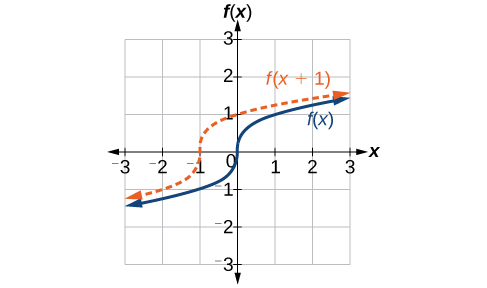
![Rendered by QuickLaTeX.com \displaystyle f(x) = \sqrt[3]{x}](https://utsa.pressbooks.pub/app/uploads/quicklatex/quicklatex.com-48e1cc12468b030b7f2ad7b453986292_l3.png) . Note that h = 1 shifts the graph to the left, that is, towards negative values of x.
. Note that h = 1 shifts the graph to the left, that is, towards negative values of x.For example, if f(x) = x2, then g(x) = (x − 2)2 is a new function. Each input is reduced by 2 prior to squaring the function. The result is that the graph is shifted 2 units to the right, because we would need to increase the prior input by 2 units to yield the same output value as given in f.
Horizontal Shift
Given a function f, a new function g(x) = f(x − h), where h is a constant, is a horizontal shift of the function f. If h is positive, the graph will shift right. If h is negative, the graph will shift left.
Try it! – Adding a Constant to an Input
Suppose that in autumn the facilities manager decides that the original venting plan starts too late, and wants to begin the entire venting program 2 hours earlier. Sketch a graph of the new function.
Solution:
We can set V(t) to be the original program and F(t) to be the revised program.
In the new graph, at each time, the airflow is the same as the original function V was 2 hours later. For example, in the original function V, the airflow starts to change at 8 a.m., whereas for the function F, the airflow starts to change at 6 a.m. The comparable function values are V(8) = F(6). See below. Notice also that the vents first opened to 220ft2 at 10 a.m. under the original plan, while under the new plan the vents reach 220ft2 at 8 a.m., so V(10) = F(8).
In both cases, we see that, because F(t) starts 2 hours sooner, h = −2. That means that the same output values are reached when F(t) = V(t − (−2)) = V(t + 2).
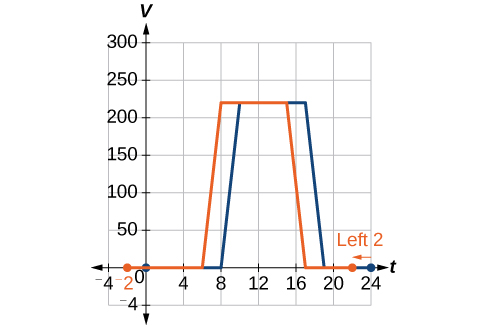
Note that V(t + 2) has the effect of shifting the graph to the left.
Horizontal changes or “inside changes” affect the domain of a function (the input) instead of the range and often seem counterintuitive. The new function F(t) uses the same outputs as V(t), but matches those outputs to inputs 2 hours earlier than those of V(t). Said another way, we must add 2 hours to the input of V to find the corresponding output for F : F(t) = V(t + 2).
Try it! – Identifying a Horizontal Shift of a Toolkit Function
The graph below represents a transformation of the toolkit function f(x) = x2. Relate this new function g(x) to f(x), and then find a formula for g(x).
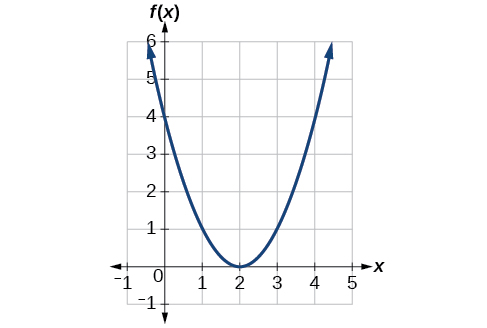
Solution:
Notice that the graph is identical in shape to the f(x) = x2 function, but the x-values are shifted to the right 2 units. The vertex used to be at (0,0), but now the vertex is at (2,0). The graph is the basic quadratic function shifted 2 units to the right, so
g(x) = f(x − 2)
Notice how we must input the value x=2 to get the output value y=0; the x-values must be 2 units larger because of the shift to the right by 2 units. We can then use the definition of the f(x) function to write a formula for g(x) by evaluating f(x−2).
Analysis
To determine whether the shift is +2 or −2, consider a single reference point on the graph. For a quadratic, looking at the vertex point is convenient. In the original function, f(0)=0. In our shifted function, g(2)=0. To obtain the output value of 0 from the function f, we need to decide whether a plus or a minus sign will work to satisfy g(2) = f(x−2) = f(0) = 0. For this to work, we will need to subtract 2 units from our input values.
Try it! – Interpreting Horizontal versus Vertical Shifts
The function G(m) gives the number of gallons of gas required to drive m miles. Interpret G(m) + 10 and G(m + 10).
Solution:
G(m) + 10 can be interpreted as adding 10 to the output, gallons. This is the gas required to drive m miles, plus another 10 gallons of gas. The graph would indicate a vertical shift.
G(m + 10) can be interpreted as adding 10 to the input, miles. So this is the number of gallons of gas required to drive 10 miles more than m miles. The graph would indicate a horizontal shift.
2. Given the function ![]() , graph the original function f(x) and the transformation g(x) = f(x + 2) on the same axes. Is this a horizontal or a vertical shift? Which way is the graph shifted and by how many units?
, graph the original function f(x) and the transformation g(x) = f(x + 2) on the same axes. Is this a horizontal or a vertical shift? Which way is the graph shifted and by how many units?
Solution:
The graphs of f(x) and g(x) are shown below. The transformation is a horizontal shift. The function is shifted to the left by 2 units.
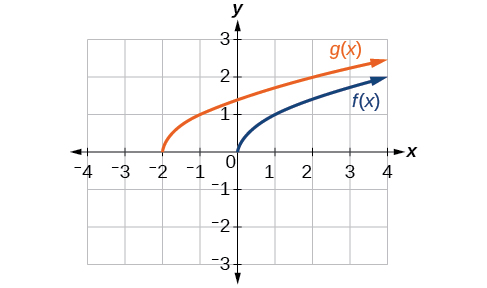
Combining Vertical and Horizontal Shifts
Now that we have two transformations, we can combine them. Vertical shifts are outside changes that affect the output (y-) values and shift the function up or down. Horizontal shifts are inside changes that affect the input (x-) values and shift the function left or right. Combining the two types of shifts will cause the graph of a function to shift up or down and left or right.
Given a function and both a vertical and a horizontal shift, sketch the graph.
- Identify the vertical and horizontal shifts from the formula.
- The vertical shift results from a constant added to the output. Move the graph up for a positive constant and down for a negative constant.
- The horizontal shift results from a constant added to the input. Move the graph left for a positive constant and right for a negative constant.
- Apply the shifts to the graph in either order.
Try it! – Graphing Combined Vertical and Horizontal Shifts
Given f(x) = |x|, sketch a graph of h(x) = f(x + 1) − 3.
Solution:
The function f is our toolkit absolute value function. We know that this graph has a V shape, with the point at the origin. The graph of h has transformed f in two ways: f(x + 1) is a change on the inside of the function, giving a horizontal shift left by 1, and the subtraction by 3 in f(x + 1) − 3 is a change to the outside of the function, giving a vertical shift down by 3. The transformation of the graph is illustrated below.
Let us follow one point of the graph of f(x) = |x|.
- The point (0, 0) is transformed first by shifting left 1 unit: (0, 0)→(−1, 0)
- The point (−1, 0) is transformed next by shifting down 3 units: (−1, 0)→(−1, −3)
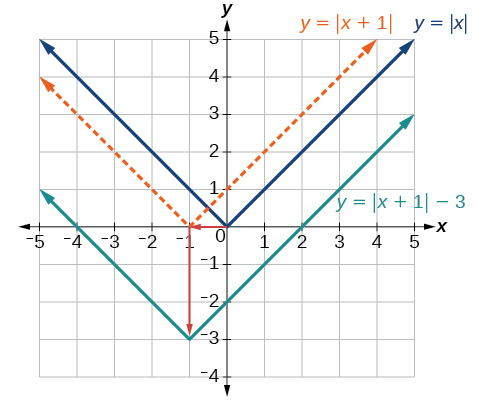
The graph below shows the graph of h.
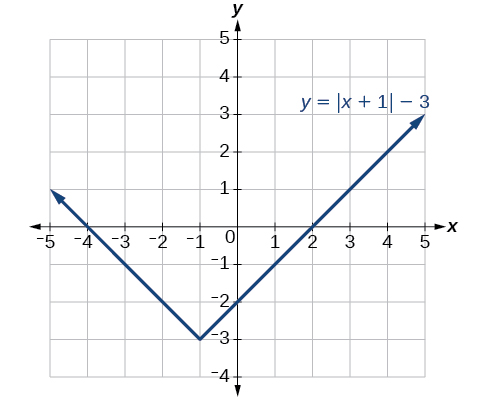
2. Given f(x) = |x|, sketch a graph of h(x) = f(x − 2) + 4.
Solution:
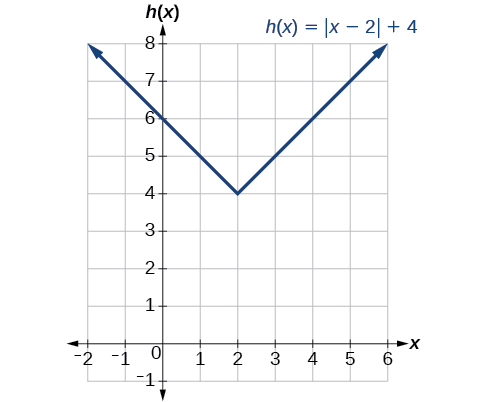
Try it! – Identifying Combined Vertical and Horizontal Shifts
Write a formula for the graph shown, which is a transformation of the toolkit square root function.
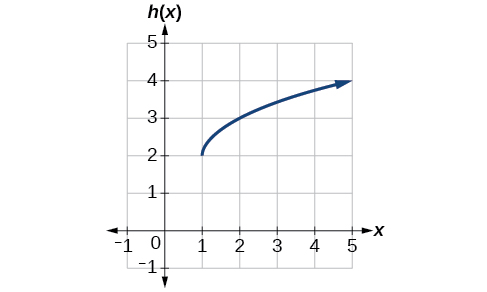
Solution:
The graph of the toolkit function starts at the origin, so this graph has been shifted 1 to the right and up 2. In function notation, we could write that as
h(x) = f(x − 1) + 2
Using the formula for the square root function, we can write
Analysis:
Note that this transformation has changed the domain and range of the function. This new graph has domain [1, ∞) and range [2, ∞).
Graphing Functions Using Reflections about the Axes
Another transformation that can be applied to a function is a reflection over the x– or y-axis. A vertical reflection reflects a graph vertically across the x-axis, while a horizontal reflection reflects a graph horizontally across the y-axis. The reflections are shown below.
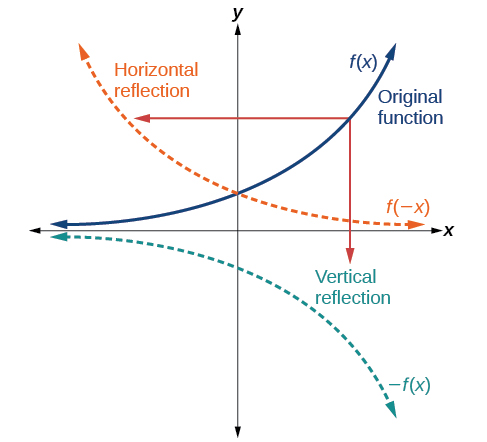
Reflections
Given a function f(x), a new function g(x) = −f(x) is a vertical reflection of the function f(x), sometimes called a reflection about (or over, or through) the x-axis.
Given a function f(x), a new function g(x) = f(−x) is a horizontal reflection of the function f(x), sometimes called a reflection about the y-axis.
Given a function, reflect the graph both vertically and horizontally.
- Multiply all outputs by –1 for a vertical reflection. The new graph is a reflection of the original graph about the x-axis.
- Multiply all inputs by –1 for a horizontal reflection. The new graph is a reflection of the original graph about the y-axis.
Try it! – Reflecting a Graph Horizontally and Vertically
Reflect the graph of V(t) = -s(t) or ![]() (a) vertically and (b) horizontally.
(a) vertically and (b) horizontally.
Solution:
-
Reflecting the graph vertically means that each output value will be reflected over the horizontal t-axis as shown below.
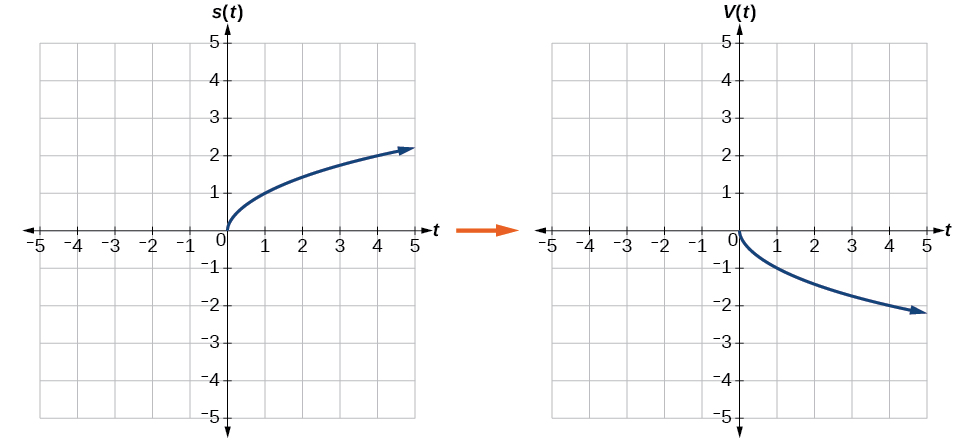
Because each output value is the opposite of the original output value, we can write
V(t) = -s(t) or
Notice that this is an outside change, or vertical shift, that affects the output s(t) values, so the negative sign belongs outside of the function
-
Reflecting horizontally means that each input value will be reflected over the vertical axis as shown below.

Because each input value is the opposite of the original input value, we can write
H(t)=s(−t) or
Notice that this is an inside change or horizontal change that affects the input values, so the negative sign is on the inside of the function.
Note that these transformations can affect the domain and range of the functions. While the original square root function has domain [0,∞) and range [0,∞), the vertical reflection gives the V(t) function the range (−∞,0] and the horizontal reflection gives the H(t) function the domain (−∞,0].
2. Reflect the graph of f(x) = |x − 1| (a) vertically and (b) horizontally.
Solution:
Stretching and Shrinking Transformations
Adding a constant to the inputs or outputs of a function changed the position of a graph with respect to the axes, but it did not affect the shape of a graph. We now explore the effects of multiplying the inputs or outputs by some quantity.
We can transform the inside (input values) of a function or we can transform the outside (output values) of a function. Each change has a specific effect that can be seen graphically.
Vertical Stretches and Compressions
When we multiply a function by a positive constant, we get a function whose graph is stretched or compressed vertically in relation to the graph of the original function. If the constant is greater than 1, we get a vertical stretch; if the constant is between 0 and 1, we get a vertical compression. Graph below shows a function multiplied by constant factors 2 and 0.5 and the resulting vertical stretch and compression.
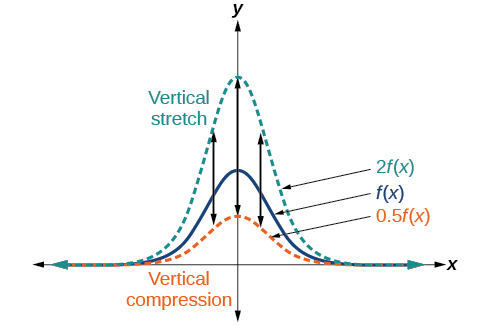
Vertical Stretches and Compressions
Given a function f(x), a new function g(x) = a f(x), where a is a constant, is a vertical stretch or vertical compression of the function f(x).
- If a > 1, then the graph will be stretched.
- If 0 < a < 1, then the graph will be compressed.
- If a < 0, then there will be combination of a vertical stretch or compression with a vertical reflection.
Given a function, graph its vertical stretch.
- Identify the value of a.
- Multiply all range values by a.
-
If a>1, the graph is stretched by a factor of a.
If 0<a<1, the graph is compressed by a factor of a.
If a<0, the graph is either stretched or compressed and also reflected about the x-axis.
Try it! – Graphing a Vertical Stretch
A function P(t) models the population of fruit flies. The graph is shown below.
![Graph to represent the growth of the population of fruit flies whose domain is [0,7] and range is [0,3]. The maximum value occurs at (3,3).](https://utsa.pressbooks.pub/app/uploads/sites/141/2024/08/CNX_Precalc_Figure_01_05_025.jpg)
A scientist is comparing this population to another population, Q, whose growth follows the same pattern, but is twice as large. Sketch a graph of this population.
Solution:
Because the population is always twice as large, the new population’s output values are always twice the original function’s output values. Graphically, this is shown in graph below.
If we choose four reference points, (0, 1), (3, 3), (6, 2) and (7, 0) we will multiply all of the outputs by 2.
The following shows where the new points for the new graph will be located.
![Graph of the population function doubled. It is a graph of transformed population, with a domain of [0, 7] and a range of [0,6]. The maximum occurs at (3,6).](https://utsa.pressbooks.pub/app/uploads/sites/141/2024/08/CNX_Precalc_Figure_01_05_026.jpg)
Symbolically, the relationship is written as
This means that for any input t, the value of the function Q is twice the value of the function P. Notice that the effect on the graph is a vertical stretching of the graph, where every point doubles its distance from the horizontal axis. The input values, t, stay the same while the output values are twice as large as before.
Try it! – Recognizing a Vertical Stretch
The graph below is a transformation of the toolkit function f(x) = x3. Relate this new function g(x) to f(x), and then find a formula for g(x).
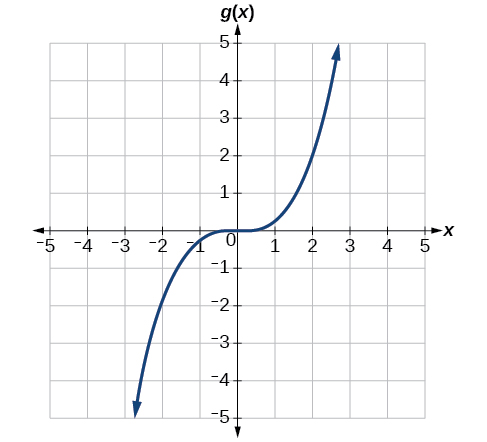
Solution:
When trying to determine a vertical stretch or shift, it is helpful to look for a point on the graph that is relatively clear. In this graph, it appears that g(2)=2.With the basic cubic function at the same input, f(2)=23=8. Based on that, it appears that the outputs of g are ![]() the outputs of the function f because g(2) =
the outputs of the function f because g(2) = ![]() f(2). From this we can fairly safely conclude that g(x)=
f(2). From this we can fairly safely conclude that g(x)=![]() f(x).
f(x).
We can write a formula for g by using the definition of the function f.
Horizontal Stretches and Compressions
Now we consider changes to the inside of a function. When we multiply a function’s input by a positive constant, we get a function whose graph is stretched or compressed horizontally in relation to the graph of the original function. If the constant is between 0 and 1, we get a horizontal stretch; if the constant is greater than 1, we get a horizontal compression of the function.
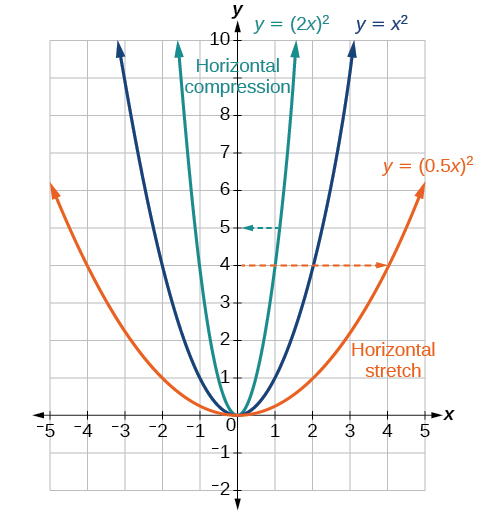 Given a function y = f(x), the form y = f(bx) results in a horizontal stretch or compression. Consider the function y = x2. The graph of y = (0.5x)2 is a horizontal stretch of the graph of the function y = x2 by a factor of 2. The graph of y = (2x)2 is a horizontal compression of the graph of the function y = x2 by a factor of 2.
Given a function y = f(x), the form y = f(bx) results in a horizontal stretch or compression. Consider the function y = x2. The graph of y = (0.5x)2 is a horizontal stretch of the graph of the function y = x2 by a factor of 2. The graph of y = (2x)2 is a horizontal compression of the graph of the function y = x2 by a factor of 2.
Horizontal Stretches and Compressions
Given a function f(x), a new function g(x) = f(bx), where b is a constant, is a horizontal stretch or Horizontal compression of the function f(x).
- If b>1, then the graph will be compressed by

- If 0<b<1, then the graph will be stretched by

- If b<0, then there will be combination of a horizontal stretch or compression with a horizontal reflection.
Given a description of a function, sketch a horizontal compression or stretch.
- Write a formula to represent the function.
- Set g(x) = f(bx) where b > 1 for a compression or 0 < b < 1 for a stretch.
Try it! – Graphing a Horizontal Compression
Suppose a scientist is comparing a population of fruit flies to a population that progresses through its lifespan twice as fast as the original population. In other words, this new population, R, will progress in 1 hour the same amount as the original population does in 2 hours, and in 2 hours, it will progress as much as the original population does in 4 hours. Sketch a graph of this population.
Solution:
Symbolically, we could write
See graph below for a graphical comparison of the original population and the compressed population.
![Two side-by-side graphs. The first graph has function for original population whose domain is [0,7] and range is [0,3]. The maximum value occurs at (3,3). The second graph has the same shape as the first except it is half as wide. It is a graph of transformed population, with a domain of [0, 3.5] and a range of [0,3]. The maximum occurs at (1.5, 3).](https://utsa.pressbooks.pub/app/uploads/sites/141/2024/08/CNX_Precalc_Figure_01_05_029ab.jpg)
Note that the effect on the graph is a horizontal compression where all input values are half of their original distance from the vertical axis.
Try it! – Recognizing a Horizontal Compression on a Graph
Relate the function g(x) to f(x) in graph below
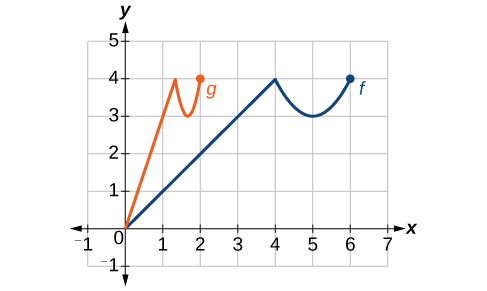
Solution:
The graph of g(x) looks like the graph of f(x) horizontally compressed. Because f(x) ends at (6, 4) and g(x) ends at (2, 4), we can see that the x-values have been compressed by ![]() because 6(
because 6(![]() ) = 2. We might also notice that g(2) = f(6) and g(1) = f(3). Either way, we can describe this relationship as g(x) = f(3x). This is a horizontal compression by
) = 2. We might also notice that g(2) = f(6) and g(1) = f(3). Either way, we can describe this relationship as g(x) = f(3x). This is a horizontal compression by ![]() .
.
Notice that the coefficient needed for a horizontal stretch or compression is the reciprocal of the stretch or compression. So to stretch the graph horizontally by a scale factor of 4, we need a coefficient of ![]() in our function: f(
in our function: f(![]() ).This means that the input values must be four times larger to produce the same result, requiring the input to be larger, causing the horizontal stretching.
).This means that the input values must be four times larger to produce the same result, requiring the input to be larger, causing the horizontal stretching.
2. Write a formula for the toolkit square root function horizontally stretched by a factor of 3.
Solution:
g(x) = f(![]() ) so using the square root function we get g(x) =
) so using the square root function we get g(x) = ![]()
Performing a Sequence of Transformations
When combining transformations, it is very important to consider the order of the transformations. For example, vertically shifting by 3 and then vertically stretching by 2 does not create the same graph as vertically stretching by 2 and then vertically shifting by 3, because when we shift first, both the original function and the shift get stretched, while only the original function gets stretched when we stretch first.
When we see an expression such as 2f(x) + 3, which transformation should we start with? The answer here follows nicely from the order of operations. Given the output value of f(x),we first multiply by 2, causing the vertical stretch, and then add 3, causing the vertical shift. In other words, multiplication before addition.
Horizontal transformations are a little trickier to think about. When we write g(x)=f(2x + 3), for example, we have to think about how the inputs to the function g relate to the inputs to the function f.Suppose we know f(7) = 12.What input to g would produce that output? In other words, what value of x will allow g(x) = f(2x + 3) = 12? We would need 2x + 3 = 7. To solve for x, we would first subtract 3, resulting in a horizontal shift, and then divide by 2, causing a horizontal compression.
This format ends up being very difficult to work with, because it is usually much easier to horizontally stretch a graph before shifting. We can work around this by factoring inside the function.
Let’s work through an example.
We can factor out a 2.
Now we can more clearly observe a horizontal shift to the left 2 units and a horizontal compression. Factoring in this way allows us to horizontally stretch first and then shift horizontally.
Combining Transformations
When combining vertical transformations written in the form af(x) + k, first vertically stretch by a and then vertically shift by k.
When combining horizontal transformations written in the form f(bx – h), first horizontally shift by h and then horizontally stretch by ![]() .
.
When combining horizontal transformations written in the form f(b(x – h)), first horizontally stretch by ![]() and then horizontally shift by h.
and then horizontally shift by h.
Horizontal and vertical transformations are independent. It does not matter whether horizontal or vertical transformations are performed first.
Try it! – Finding a Triple Transformation of a Graph
Use the graph of f(x) seen below to sketch a graph of ![]()
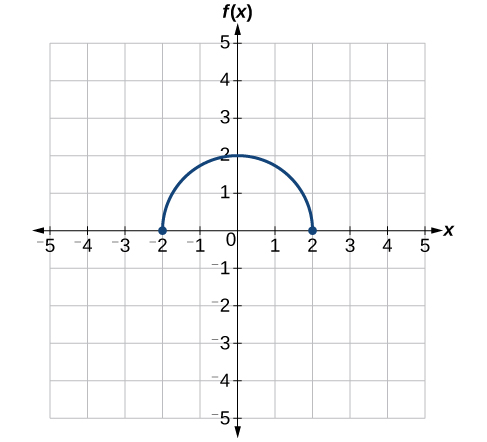
Solution:
To simplify, let’s start by factoring out the inside of the function.
By factoring the inside, we can first horizontally stretch by 2, as indicated by the ![]() on the inside of the function. Remember that twice the size of 0 is still 0, so the point (0,2) remains at (0,2) while the point (2,0) will stretch to (4,0). See graph below.
on the inside of the function. Remember that twice the size of 0 is still 0, so the point (0,2) remains at (0,2) while the point (2,0) will stretch to (4,0). See graph below.
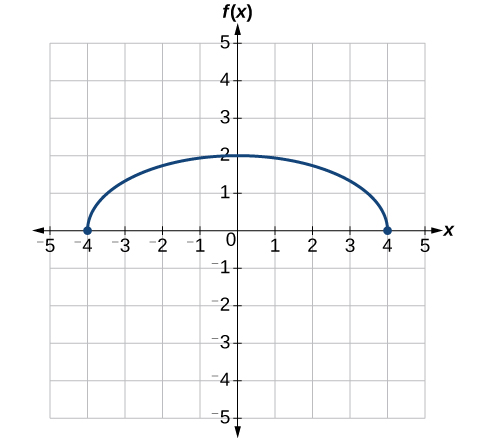
Next, we horizontally shift left by 2 units, as indicated by x + 2. See graph below.
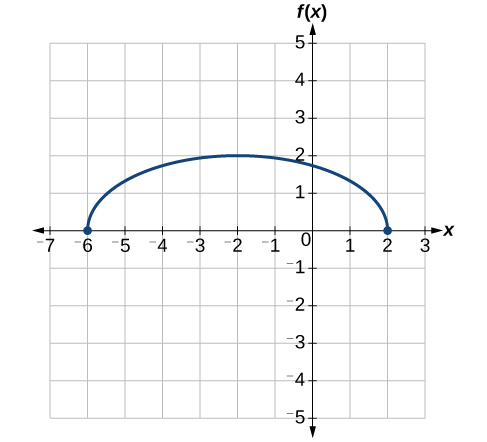
Last, we vertically shift down by 3 to complete our sketch, as indicated by the −3 on the outside of the function. See graph below.
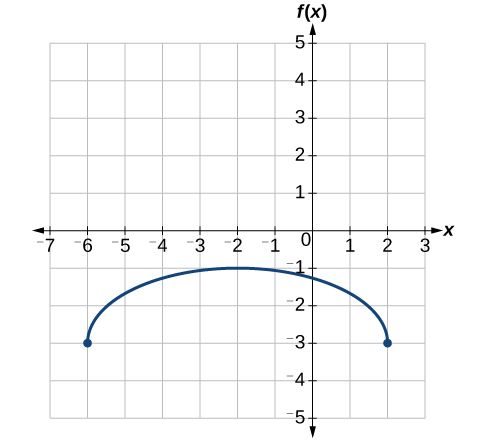
Access this online resource for additional instruction and practice with transformation of functions.
Key Concepts
- Graph of a Function
- The graph of a function is the graph of all its ordered pairs, (x, y) or using function notation, (x, f(x)) where y=f(x).
f name of function x x-coordinate of the ordered pair f(x) y-coordinate of the ordered pair
- The graph of a function is the graph of all its ordered pairs, (x, y) or using function notation, (x, f(x)) where y=f(x).
- Linear Function
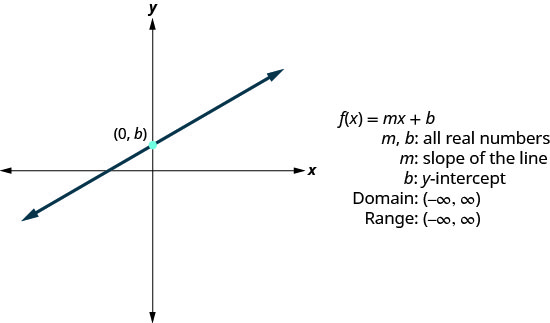
- Constant Function
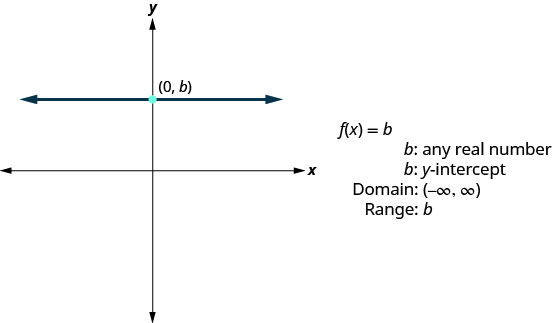
- Identity Function

- Square Function
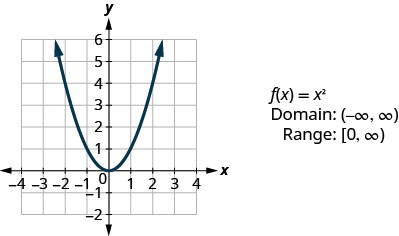
- Cube Function
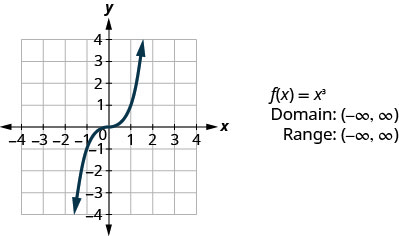
- Square Root Function
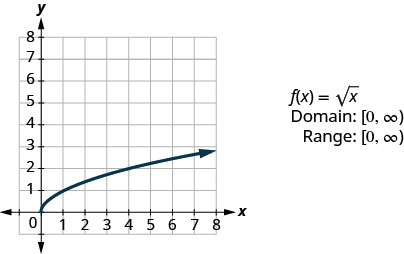
- Absolute Value Function
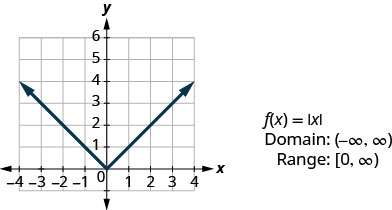
| Constant function | f(x) = c, where c is a constant |
| Identity function | f(x) = x |
| Absolute value function | f(x) = |x| |
| Quadratic function | f(x) = x2 |
| Cubic function | f(x) = x3 |
| Reciprocal function | f(x) = |
| Reciprocal squared function | f(x) = |
| Square root function | f(x) = |
| Cube root function | f(x) = |
Transformations
| Vertical shift | g(x) = f(x)+k (up for k>0) |
| Horizontal shift | g(x) = f(x−h) (right for h>0) |
| Vertical reflection | g(x) = −f(x) |
| Horizontal reflection | g(x) = f(−x) |
| Vertical stretch | g(x) = af(x) (a>0) |
| Vertical compression | g(x) = af(x) (0<a<1) |
| Horizontal stretch | g(x) = f(bx) (0<b<1) |
| Horizontal compression | g(x) = f(bx) (b>1) |
A transformation that shifts a function’s graph up or down by adding a positive or negative constant to the output
A transformation that shifts a function’s graph left or right by adding a positive or negative constant to the input
A transformation that reflects a function’s graph across the x-axis by multiplying the output by −1
A transformation that reflects a function’s graph across the y-axis by multiplying the input by −1
A transformation that stretches a function’s graph vertically by multiplying the output by a constant a > 1
A function transformation that compresses the function’s graph vertically by multiplying the output by a constant 0 < a < 1
A transformation that stretches a function’s graph horizontally by multiplying the input by a constant 0 < b < 1
a transformation that compresses a function’s graph horizontally, by multiplying the input by a constant b > 1

